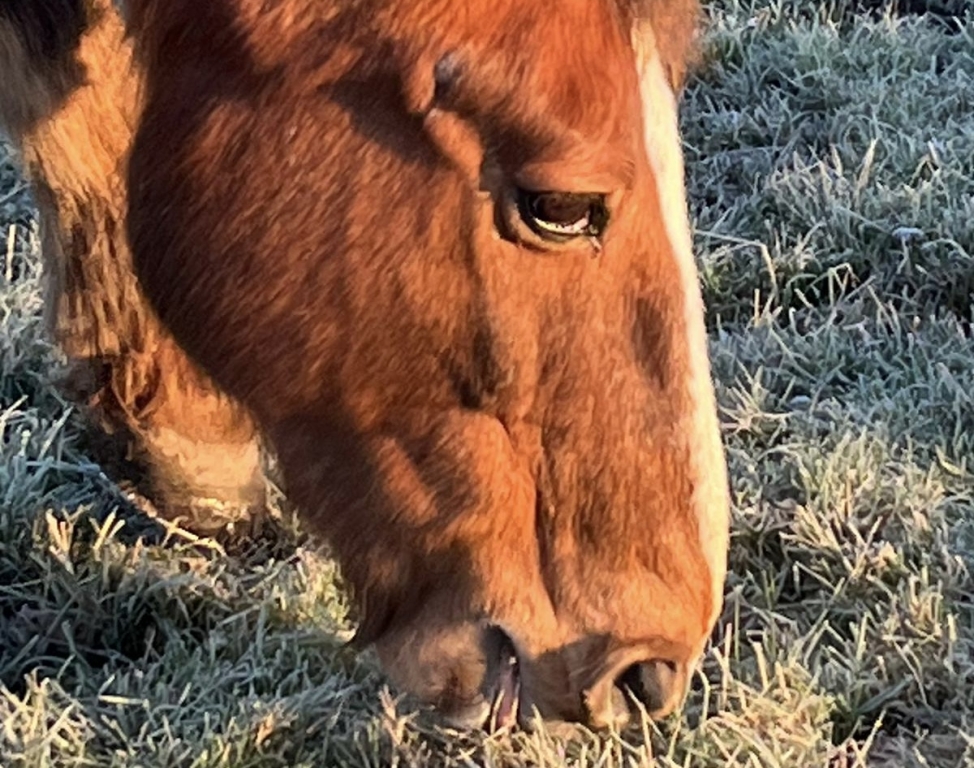
Using The Wrong Wormer Can Increase The Risk Of Potentially Fatal Disease
Zoetis Inc. is advising horse owners to ensure they use a wormer that is indicated to treat encysted small redworm this winter.
“You may think any wormer will do for the treatment of the dangerous encysted small redworm but using one that does not specifically treat the encysted stages during late autumn or winter can actually increase the risk of a horse with a high encysted small redworm burden developing larval cyathostominosis, which can be fatal,” explains Zoetis vet Wendy Talbot.1,2
All horses of more than six months of age should be blood tested by a vet to determine the presence of an encysted small redworm burden or treated with a wormer that is licensed to treat encysted small redworm in autumn/winter, regardless of their faecal worm egg count.3,4,5,6,7
“It’s imperative that the wormer used is indicated for encysted small redworm,” advises Wendy. “This is because wormers such as those containing ivermectin, pyrantel or single dose fenbendazole will remove the adult stages of small redworm from the gut which then leaves room for the encysted stages in the gut wall to emerge and take their place. It is this en masse emergence which can cause severe damage to the gut resulting in clinical signs such as diarrhoea, colic and even death 1,2”
Moxidectin is the only active ingredient licensed to treat encysted small redworm in a single dose. Because moxidectin acts against the encysted stages before they have a chance to emerge, it is less likely that larvae in the gut wall will be able to cause this effect.1,2
A five-day course of fenbendazole is also licensed to treat encysted small redworm but there is widespread evidence of small redworm resistance to fenbendazole, including the five-day dose so a resistance test is recommended before using it.4
“A practical and cost-effective solution to targeting parasites of concern over winter, may be to combine a bot treatment with encysted small redworm and tapeworm treatments using a single dose of moxidectin and praziquantel,” says Wendy.
Always seek advice from your vet or medicines prescriber.
For further information contact your Zoetis Account Manager or Zoetis on [email protected] or 0845 300 8034.
Visit www.horsedialog.co.uk for a wide range of informative blogs on equine health and wellbeing, including worming.
1. AAEP (2019) Parasite Control Guidelines
2. Reinemeyer CR and Nielsen MK (2013) Handbook of Equine Parasite Control.p87. Hoboken, NJ: John Wiley & Sons.
3. Rendle D (2017) De-worming targeted plans. Vet Times, Equine, Vol.3 Issue 1 p16-18
4. Matthews JB (2008) Equine Vet Educ, p 552-560
5. Hallowell- Evans C and Hallowell G (2017) Vet Times, April 24
6. Austin Davis Biologics Ltd. Small Redworm Blood Test Press Release. https://www.austindavis.co.uk/small-redworm-blood-test. Accessed 11th October 2019
7. Austin Davis: Elisa Kits. https://www.austindavis.co.uk/elisa-kits
More from Zoetis
- Zoetis Hosts Free Webinar to Share Latest Knowledge of Lungworm
- Vets Urge Action as Dog Arthritis Misconceptions Persist
- Zoetis Acquires Veterinary Pathology Group to Strengthen Veterinary Diagnostics in UK and Ireland
- Zoetis to Unveil End-to-End Support for Veterinary Care at London Vet Show 2025
- Vets asked to circulate clostridial disease survey to their farming clients

 4 years ago
4 years ago  1275 views
1275 views
 2 weeks ago
2 weeks ago 